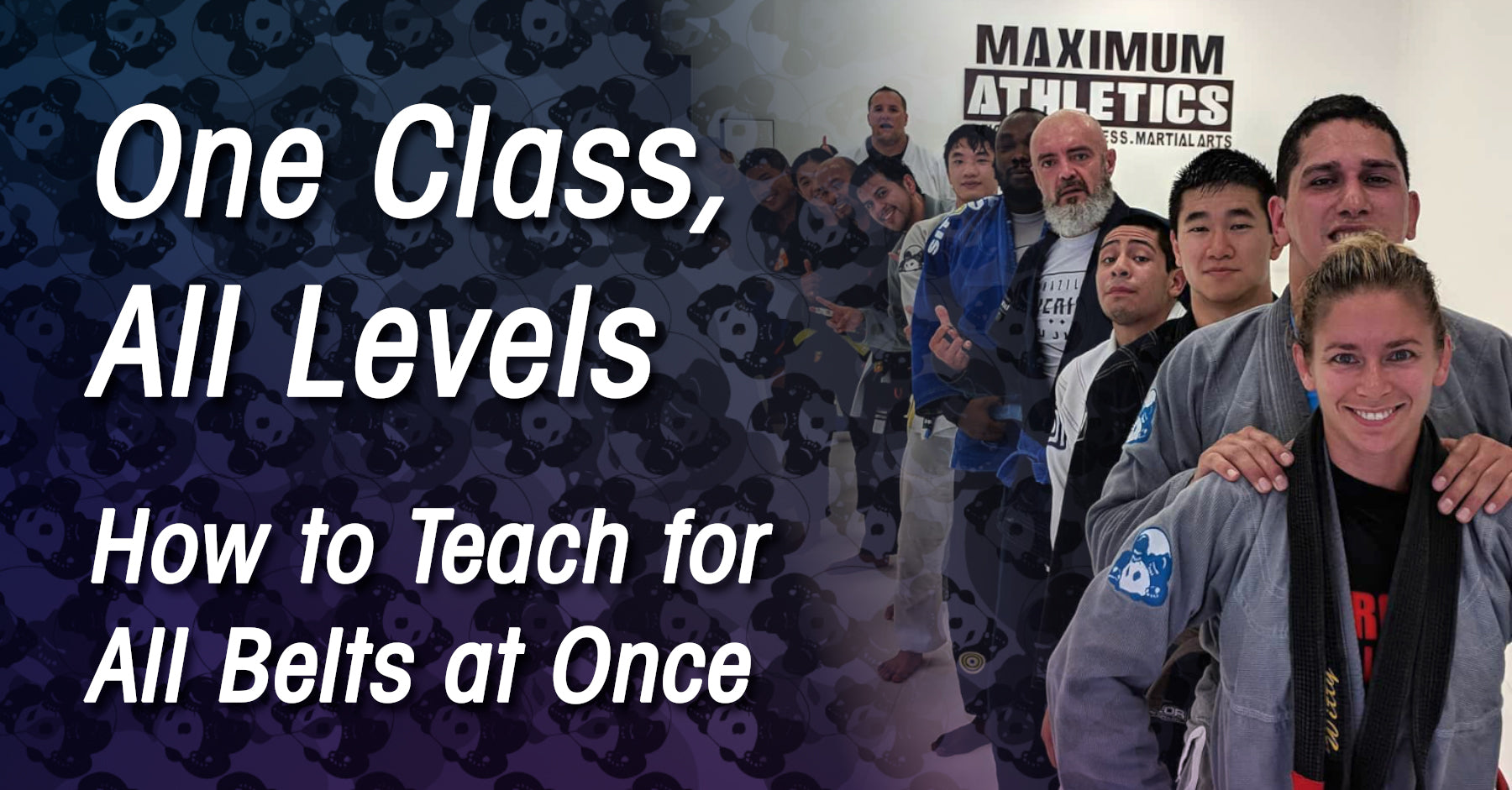
The Best Approach to an All-Levels Class
Even in the early days of jiu-jitsu, teaching styles and class formats varied significantly from school to school and from instructor to instructor. For many years, the way jiu-jiteiros taught jiu-jitsu was mostly a rehash of how they were taught with, perhaps, a few variations in preference but not much else. That has begun to change as more instructors pull ideas from education and sports psychology to inform how they teach.
For most students, however, class formats are either divided by skill level or, most commonly, all belt levels train together.
As an aside, I am a big fan of all-levels class formats, and I run them as a deliberate part of how I teach. I like how that class type forces upper belts to revisit fundamentals and to help new students, I like how it exposes students to the range of jiu-jitsu skill levels from the first day, and I like how the format allows students to dictate their own intensity. If you are an advanced student who wants to drill harder, you can take the same class but pair off with an advanced training partner and put more energy into your reps.
At any rate, the same reasons why I love the all-levels instruction format are the same reasons that often frustrate students. In this way, there is a meta element to being a jiu-jitsu student. Sometimes, you have to learn how to learn.
If you are training under an all-levels format, here is how to get the most out of your class time:
For most students, however, class formats are either divided by skill level or, most commonly, all belt levels train together.
As an aside, I am a big fan of all-levels class formats, and I run them as a deliberate part of how I teach. I like how that class type forces upper belts to revisit fundamentals and to help new students, I like how it exposes students to the range of jiu-jitsu skill levels from the first day, and I like how the format allows students to dictate their own intensity. If you are an advanced student who wants to drill harder, you can take the same class but pair off with an advanced training partner and put more energy into your reps.
At any rate, the same reasons why I love the all-levels instruction format are the same reasons that often frustrate students. In this way, there is a meta element to being a jiu-jitsu student. Sometimes, you have to learn how to learn.
If you are training under an all-levels format, here is how to get the most out of your class time:
- If you are an advanced student working with a newer student, use that time as an opportunity to hone your teaching skills and think more deeply about the fundamentals. Teaching others is a useful learning tool for yourself, even if it may not feel like it in the moment.
- If you are a new student working with an advanced student, don’t be embarrassed. Everyone starts at the beginning, and you should take advantage. Learn from your training partner’s experience.
- If you are an advanced student and the class is covering fundamental material, use that as an opportunity to refine your basics. Eliminate wasted movements. Focus on the details. Ask your instructor for feedback on how you can make your basics even tighter.
- If you are a beginner student and the class is learning advanced material, just go for it. Your instructor knows that the move will be particularly challenging for new students, but that doesn’t mean you can’t pull it off. If you embrace the challenge, you might be surprised at how well you rise to the occasion.
- Take charge of your training. Even the most thoughtful jiu-jitsu curriculums will struggle to cover what every student needs at any given time. If you have a position you want to improve, sneak in extra repetitions before and after class, and use your open mats to do more than roll. An all-levels class means that you will see a broad range of technique, but a big part of going deeper is up to you.
Other articles:
Quick links
Contact us
About us
Quality BJJ gear at fair prices, available all year. Founded in 2012 to provide an alternative to high-cost, limited edition gis. Dive into the BJJ lifestyle with us—join the Panda Nation!"
